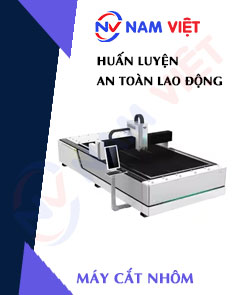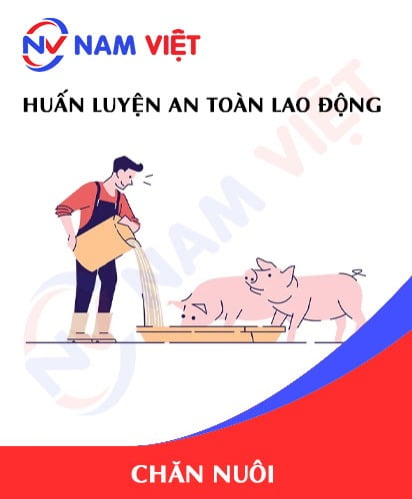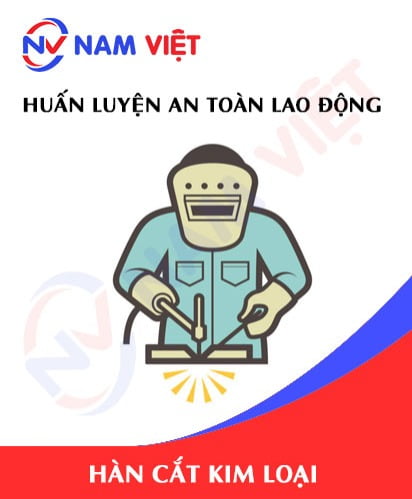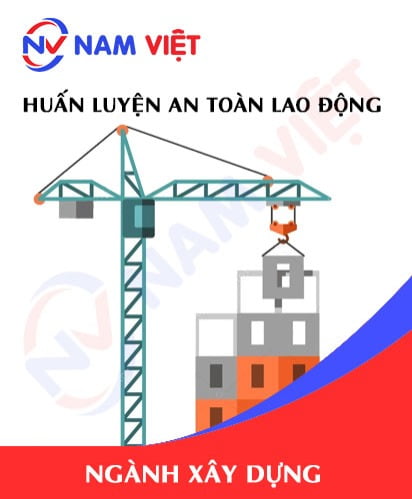Occupational Safety Training for Operating Aluminum Sheet Cutting Machines
99,000 ₫
Note: The above price is calculated per person and may vary depending on the number of participants in the course and market fluctuations. For more accurate price support, please refer to the pricing table or contact our consulting staff directly.
Occupational safety is an important issue when operating aluminum sheet cutting machines and needs to be addressed promptly to ensure the health and safety of workers and enhance the reputation of businesses here. The Occupational Safety Training course is one of the effective solutions to raise awareness on preventing occupational accidents for workers operating aluminum sheet cutting machines.
Table of Contents
Toggle1. Overview of Aluminium Sheet Cutting Machines
a. What is an Aluminium Sheet Cutting Machine?
An aluminium sheet cutting machine is a specialized device used to cut aluminium sheets of varying thicknesses and sizes. This type of machine is designed to ensure cutting processes are precise, fast, and safe, helping workers easily process aluminium parts as required. Aluminium sheet cutting machines are commonly used in the construction, mechanical, and manufacturing industries, where aluminium is an important material for fabricating door frames, partitions, panels, and other products.
Aluminium cutting machines can operate using various cutting methods such as saw blade cutting, laser cutting, or water jet cutting. Each cutting method has its own advantages and disadvantages, depending on user needs. For example, saw blade cutting usually offers high precision but may produce burrs, while laser or water jet cutting provides smoother cuts without deforming the material.
Using an aluminium sheet cutting machine increases labor productivity and saves time compared to manual cutting methods. Furthermore, it ensures consistent cutting quality and safety for operators, helping minimize workplace accidents.
b. Operating principles of aluminium sheet cutting machines
The operating principle of aluminium sheet cutting machines is based on applying cutting force from specialized tools such as saw blades, laser beams, or water jets to separate aluminium sheets along the desired cutting lines. Each machine type has its own operating principle, suitable for the cutting method it employs.
- Saw blade cutting machines: These machines work by using a high-speed rotating saw blade. When activated, the saw blade spins at high speed, cutting through the aluminium sheet along a predefined path. To ensure safety and accuracy, the aluminium sheet is firmly fixed on the cutting table before starting. Saw blades are typically made of hard alloys, ensuring durability and good cutting ability.
- Laser cutting machines: The laser cutting principle relies on using a high-intensity laser beam capable of melting and vaporizing material at the cutting point. The machine uses CNC control systems to precisely direct the laser beam, producing smooth cuts without needing additional finishing. This method is suitable for applications requiring high precision and fast cutting speeds.
- Water jet cutting machines: These machines use high-pressure water jets, sometimes combined with abrasive particles, to cut through aluminium sheets. The water pressure is pushed through a specialized nozzle, creating enough cutting force to separate the material. Water jet cutting does not generate heat, preventing thermal deformation and preserving the material’s structure.
Regardless of the method, aluminium cutting machines are controlled by automatic or semi-automatic systems to ensure accuracy and operator safety.

c. Industries using aluminium sheet cutting machines
- Construction industry: Aluminium is widely used in construction for door frames, partitions, roofing systems, and other architectural structures. Aluminium sheet cutting machines help produce aluminium components with precise dimensions to meet the design requirements of projects ranging from residential to industrial.
- Automotive and aerospace industries: Aluminium’s lightweight, durability, and high corrosion resistance make it popular in car and aircraft manufacturing. Aluminium cutting machines are used to process parts such as vehicle frames, airplane wings, and other components requiring high precision and quality.
- Mechanical and metalworking industries: Aluminium is an important material for producing equipment, machinery, and components. Aluminium cutting machines allow precise fabrication of parts, optimizing production processes and saving time and effort compared to manual methods.

2. Overview of safety training courses for operating aluminium sheet cutting machines
a. What is occupational safety training?
- Occupational safety training for operating aluminium sheet cutting machines involves sessions that equip workers with awareness on preventing workplace accidents. Workers directly working with aluminium cutting machines belong to group 3.
- The safety training course helps workers recognize and avoid hazards, reducing risks of workplace accidents during work.
REGISTER FOR OCCUPATIONAL SAFETY TRAINING SERVICES
b. Training duration
Initial occupational safety training duration
- The total training time is at least 24 hours, including examination time.
- 8 hours of theoretical study on policies and laws regarding occupational safety and hygiene
- 8 hours of theoretical study on basic knowledge of occupational safety and hygiene
- 4 hours of theoretical study on specialized training content
- 2 hours of practical training on specialized content
- 2 hours of theoretical examination at the end of the course
The safety training center will divide the time into multiple sessions depending on worker scheduling. Typically, there are 6 training sessions over 3 days, assuming the enterprise arranges continuous training time.
Periodic safety training duration
- Before the occupational safety card expires, workers wishing to renew must undergo periodic occupational safety training with a duration at least 50% of the initial training time.
Explanation: The total periodic occupational safety training time is at least 12 hours, including examination time. After completing periodic training and passing the test, workers will be reissued or extended their occupational safety card.
c. Course content
| No. | TRAINING CONTENT | TRAINING DURATION (HOURS) | |||
| Total | Including | ||||
| Theory | Practice | Examination | |||
| I | System of policies, laws on occupational safety and hygiene | 8 | 8 | 0 | 0 |
| 1 | Overview of the legal documents system on occupational safety and hygiene. | 6 | 6 | ||
| 2 | System of standards and technical regulations on occupational safety and hygiene. | 1 | 1 | ||
| 3 | Specific regulations by state management agencies on occupational safety and hygiene when constructing, expanding, or renovating facilities, production bases, usage, storage, and inspection of machinery, equipment, materials, and substances with strict safety and hygiene requirements. | 1 | 1 | ||
| II | Basic knowledge of occupational safety and hygiene | 8 | 8 | 0 | 0 |
| 1 | Basic knowledge of hazardous and harmful factors at the workplace. | 4 | 4 | ||
| 2 | Methods to improve working conditions. | 1 | 1 | ||
| 3 | Safety culture in production and business. | 1 | 1 | ||
| 4 | Rights and obligations of employers and workers; policies and regimes on occupational safety and hygiene for workers; functions and tasks of the safety network and safety officers. | 1 | 1 | ||
| 5 | Occupational safety and hygiene regulations, safety signs, instructions, and the use of safety equipment, personal protective equipment; first aid skills, accident prevention, and occupational disease control. | 1 | 1 | ||
| III | Specialized training content | 6 | 4 | 2 | 0 |
| Comprehensive knowledge of machines, equipment, substances generating hazardous and harmful factors; risk analysis, evaluation, and management on occupational safety and hygiene; safe working procedures with machines, equipment, and substances with strict safety requirements. | 6 | 4 | 2 | ||
| IV | Final safety training examination | 2 | 2 | 0 | 0 |
| Total | 24 | 22 | 2 | ||
See more about training content for 6 groups
d. Occupational safety card
After completing the occupational safety training and passing the examination, workers will be issued an occupational safety card (commonly called occupational safety certificate group 3).
The group 3 safety card clearly displays personal information such as name, date of birth, job and specific working environment, along with training duration, official red stamp, and signature confirming course completion.
According to regulations on card issuance stated in Clause 2 of Article 24 of Decree 44/2016/ND-CP, there are two cases:
- If the employer and worker have a labor contract, the employer must sign, stamp, and validate the safety card for the group 3 worker after the training course and passing the test from the safety training unit.
- If the worker is freelance or temporary, without a labor contract, the training unit must sign, stamp, and validate the safety card after the worker completes training and passes the test.

3. Hazards for Workers When Operating Aluminium Sheet Cutting Machines
When operating aluminium sheet cutting machines, workers face many potential hazards if they are not properly protected and do not follow labor safety regulations. Below are some common hazards:
- Risk of mechanical injuries: The cutting blade of the aluminium cutting machine, especially saw blade cutters, operates at very high speeds and can cause serious injuries if workers come into direct contact. Fingers, hands, and other body parts risk cuts, crushing, or severing if proper protective equipment is not used or if operators are inattentive during operation.
- Risk from flying debris and burrs: During cutting, aluminium fragments and burrs (small metal shards) may be ejected at high speed, posing dangers to the eyes, face, and skin of the operator. This requires workers to wear safety glasses, face shields, and other protective gear to avoid injuries caused by flying material.
- Risk of fire, explosion, and electric shock: For aluminium cutters using laser or electric cutting, workers may face fire or explosion risks from electric sparks, or electric shock hazards if the machine’s insulation is poor or electrical circuits have faults. Electrical incidents can also occur due to improper maintenance or environmental factors such as high humidity.

4. Measures to Control Labor Accidents When Operating Aluminium Sheet Cutting Machines
To control and reduce the risk of labor accidents when operating aluminium sheet cutting machines, workers and enterprises need to implement strict control measures, including technical, organizational, and personal protective factors. Below are some important measures:
- Use of Personal Protective Equipment (PPE): Workers must be equipped with full protective gear such as cut-resistant gloves, safety glasses, helmets, safety shoes, and protective clothing. Especially, safety glasses and face shields are mandatory to prevent injuries from flying debris and burrs during cutting. Cut-resistant gloves protect hands from injuries when handling sharp aluminium materials.
- Training and Safety Education: Workers need comprehensive training on how to operate aluminium sheet cutting machines, including startup, shutdown, and emergency procedures. Training on hazards and specific safety measures for each type of cutter (saw blade, laser, or water jet) is crucial to ensure workers fully understand risks and avoidance methods.
- Regular Inspection and Maintenance: Aluminium cutting machines must be regularly inspected and maintained to ensure smooth and safe operation. Check components such as cutting blades, electrical systems, pneumatic systems (if any), and automatic control devices. Safety equipment like emergency stop buttons and protective shields must function properly. If faults or abnormalities are detected, the machine should be immediately stopped and repaired by qualified technicians.
- Periodic certification of aluminium sheet cutting machines to detect early safety issues such as damage, wear, or mechanical failures, thereby reducing labor accident risks.
5. Benefits of Labor Safety Training
An Toàn Nam Việt provides your enterprise with excellent benefits after completing labor safety training courses as stipulated in the Decree 44/2016/NĐ-CP on Occupational Safety and Hygiene. Companies, factories, and enterprises can expect:
- Workers can identify potential risks of labor accidents and take preventive measures to avoid accidents.
- Your enterprise establishes risk prevention measures in production, operation, and maintenance processes.
- Reduce costs associated with labor safety incidents.
- Uninterrupted production increases labor productivity and product quality.
- Compliance with labor safety laws, avoiding legal risks.
- Build credibility and professionalism in all aspects, thereby enhancing your enterprise’s brand.
Nam Việt’s training courses are solutions to prevent external risk factors from affecting individuals, helping them avoid dangers that could cause injuries or more severe outcomes like death.
REGISTER FOR LABOR SAFETY TRAINING SERVICES
6. Customer Feedback After Completing Training Courses
An Toàn Nam Việt has many years of experience accompanying numerous enterprises across Vietnam in general and the southern provinces in particular. This responsibility is precious to Nam Việt, so our Labor Safety Training work is increasingly professional. The motivation for Nam Việt’s growth comes from positive feedback and suggestions from enterprises. Below are testimonials from our partners we have served.
Bắc Nam E&C Investment Construction Joint Stock Company
“My first experience with An Toàn Nam Việt was a pleasant surprise thanks to the 24/7 support from their consulting team. The training class organization was quick and convenient for our company. Many thanks to Nam Việt!”
Hoa Đất Construction and Trading Joint Stock Company
“Nam Việt’s service helped us greatly in simplifying labor safety and completing safety documentation for work processes. The consulting team was enthusiastic and timely in addressing our questions. 5 stars for Nam Việt.”
See more customer interviews after using An Toàn Nam Việt’s services
7. Training Capacity of An Toàn Nam Việt
An Toàn Nam Việt is a reputable and quality labor safety training center in Vietnam today. Safety training sessions are continuously held at manufacturing plants, factories, or construction sites across the country (all 63 provinces).
REGISTER FOR LABOR SAFETY TRAINING SERVICES
Labor Safety Training License
- An Toàn Nam Việt has been inspected and certified by the Department of Safety under the Ministry of Labor – Invalids and Social Affairs as qualified to conduct occupational safety and hygiene training. This further strengthens our capacity in labor safety training.

Materials and Lectures
- Before safety training materials are used in ATLĐ training courses, they are reviewed and approved to ensure accuracy and effectiveness in application.
- Our instructors’ teaching methods are standardized according to An Toàn Nam Việt standards, developed by experts in occupational safety and hygiene training to maximize knowledge absorption.
Facilities
- Controlling environmental factors in training rooms enhances teaching efficiency and knowledge retention.
- Our training facilities provide spacious rooms meeting standards for area, lighting, and training equipment, etc.
8. Nationwide Reputable Quality Safety Training Center
At An Toàn Nam Việt, we prioritize labor safety training as a professional mission. For us, imparting self-protection knowledge to workers, equipping them with safety tools for their livelihood, is contributing to national development.
To ensure effective training, we meticulously prepare every detail, from tools, teaching equipment to curriculum, materials, sound, and lighting.
Our labor safety trainers are experts with many years of experience. They also conduct research on hazard identification across industries and preventive measures.
Our instructors deliver practical, lively, and easy-to-understand lessons to workers. These factors help learners feel comfortable during training and absorb knowledge effectively. The content strictly adheres to Decree 44/2016/NĐ-CP.
Thus, trainees learn many hazard prevention methods and how to protect themselves, applying them appropriately in real work.
Our Training Center proudly provides reputable and professional labor safety training services with advantages such as:
- Competitive training costs with guaranteed quality.
- Flexible training schedules aligned with company production.
- Quick and legally compliant certification procedures.
- Experienced trainers with many years in the field.
- Training rooms controlled for factors affecting learning efficiency.
- Courses tailored to enterprise labor safety needs.
- Dedicated, professional service ensuring fast and accurate customer support.

9. Additional Labor Safety Training Materials
- Safety materials for operating aluminium sheet cutting machines
- Labor Safety Training Document Set
- Labor Safety Training Test Set
- Labor Safety Training Curriculum for Aluminium Sheet Cutting Operation
- Labor Safety Multiple Choice Test for Aluminium Sheet Cutting Operation
No comments yet















Review Occupational Safety Training for Operating Aluminum Sheet Cutting Machines
There are no reviews yet.